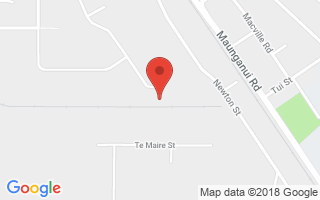Hypogen System
Liquid Chlorine New Zealand’s range of onsite sodium hypochlorite generators, Hypogen® can produce up to 48kg per day of chlorine and are designed as an alternative to chlorine gas or commercial sodium hypochlorite.
The Hypogen® system is made up of the following components:
Control System:
The Hypogen series of onsite sodium hypochlorite generators are fully automatic and are controlled using a PLC and colour operator touch screen, except for the economy model, the Hypogen E does not include an operator interface. The colour touch screen makes the system extremely easy to understand and operate, while giving the operators detailed graphical information on the system. There are 17 alarm conditions that lockout the system, including low mains water inlet flow, low brine flow, high cell pressure and high and low electrolyte temperature alarms. Each alarm brings up its own page on the touch screen with detailed information, to help operators troubleshoot, if required.
GSM Modem:
The Hypogen system comes with a GSM modem to enable the system to be remotely monitored and controlled. SMS text messages can be sent and received by the Hypogen controller from selected phone numbers to allow remote notification of alarm conditions, plant status and remote operation. The modem also allows Liquid Chlorine to fully access the Hypogen controller for diagnostic purposes. The GSM modem is an optional item for the Hypogen E model.
Electrolyser Cell:
The key component in any electro-chlorination system is the electrolyser cell. In the Hypogen system both the anodes and cathodes are made of titanium. The anodes are coated with a platinum group mixed metal oxide and come with a five year warranty from the first date of operation.
The Hypogen system produces onsite low strength 0.8% sodium hypochlorite through the electrolysis of the brine solution, which takes place in a once-through process. The brine solution enters the electrolyser cell, and as it travels through the cell electricity converts the brine solution into low strength sodium hypochlorite.
Positive Hydrogen Removal & Dilution:
A by-product of any electrolytic chlorine generation process is the production of hydrogen. To eliminate any concerns with the accumulation of the hydrogen to create a potentially hazardous concentrations, all Hypogen systems utilise an air blower to dilute any hydrogen to well below its flammability limit. Combined with sealed bulk storage tanks, the diluted hydrogen is force ventilated to a safe outdoor discharge point. Air flow monitoring is used to check the blower is operating and ensuring there is no risk to safety.
Softener:
A twin tank water softener is installed where the brine solution hardness is greater than 17mg/l. This is to ensure the maintenance free operation of the Hypogen system and protect the electrolyser cell scale buildup.
Salt Saturator:
Liquid Chlorine New Zealand install large saturators which allows the salt to be stored indefinitely, while having enough capacity to provide continual production and requiring minimal refill cycles from the operators. The salt is stored wet and the make-up water operates automatically. The water passes through the salt bed forming a saturated brine solution of approximately 35% strength.
Storage Tank:
The bulk chlorine storage tank allows chlorine to be stored for future use and to provide the release and removal of the hydrogen produced from the generation process. Level sensors are installed in the storage tank that start and stop the Hypogen system. The storage tanks are generally size to provide 3-4 days storage, although this can be increased or decreased to suit available space and site requirements.
Installation & Service:
The Hypogen series of onsite sodium hypochlorite generator are easily installed into your existing system or new plant. The main components are pre-assembled with only the main connections and interface piping between the supplied components required. Liquid Chlorine can organise the complete installation and system changeover service if desired.
The Hypogen system needs to be serviced on a six-monthly basis. This is to confirm the system is operating correctly and clean the electrolyser cell if required. All that is required from the operator onsite is the regular addition of salt into the salt saturation tank.

